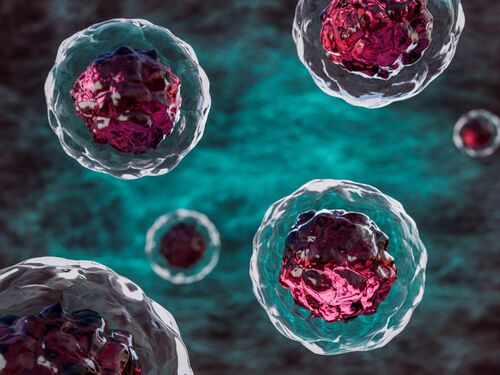Completed
RNA plays critical roles in nearly all biological processes, but current methods for sequencing RNA are significantly limited. This is partially because RNA molecules are chemically modified within the cell to enable their proper function, and currently, the available sequencing technologies can only detect a small number of these modifications. This limits our understanding of different molecular processes and leaves a gap in our knowledge related to human diseases and disorders. This committee will assess the scientific and technological breakthroughs, workforce, and infrastructure needs to sequence, and ultimately understand the roles RNA modifications play in biological processes and disease.
Featured publication
Consensus
·2024
Concerted efforts to deepen understanding of RNA modifications and their role in living systems hold the potential to advance human health, improve crop yields, and address other pressing societal challenges. RNA, which carries the information encoded by DNA to the places where it is needed, is amaz...
View details
Description
The National Academies of Sciences, Engineering, and Medicine will convene an ad hoc committee to conduct a study on direct sequencing of modifications of RNA (referred to as epitranscriptome) from humans and model organisms. As part of this study, the committee will develop a roadmap for achieving direct sequencing of modifications of RNA. The National Academies’ committee will examine:
- Scientific needs for sequencing of modifications of RNA.
- Current RNA sequencing methodologies and technologies and their current limitations, documenting which RNA bases and modifications can be sequenced and whether the RNA is sequenced directly or indirectly.
- Current RNA and RNome* databases, including the types of RNA included, the organisms from which the RNA sequences were obtained, and limitations of the databases.
- Challenges associated with current methodologies and technologies for sequencing RNA and its modifications for scientific, clinical, and public health analyses.
- Scientific and technological hurdles including computational and analytic technologies, that need to be overcome to achieve direct sequencing of RNA modifications.
- Computational and analytic technologies needed to analyze modified RNA.
- Data ecosystem for supporting sequencing and analysis of RNA modifications.
- Policy, workforce, and infrastructure needs to support sequencing and analysis of RNA modifications.
- Potential for existing and new technologies to discover previously-unrecognized RNA modifications.
The National Academies will produce a consensus report that focuses on defining the science and technology roadmap and actionable recommendations toward achievement of direct sequencing of RNA modifications. During the study, the committee will hold a series of coordinated activities (e.g., workshops, meeting of experts, ideation challenges) to provide platforms for creative collaboration among experts from multiple scientific disciplines and organizations. Individual products summarizing key outcomes from these activities may be produced as interim products of the consensus study.
* The RNome refers to all of the RNA species in a cell at a given time (Arora, 2018).
Collaborators
Committee
Co-Chair
Co-Chair
Member
Member
Member
Member
Member
Member
Member
Member
Member
Member
Member
Member
Member
Member
Steven Moss
Staff Officer
Sponsors
National Institutes of Health
Warren Alpert Foundation
Staff
Jessica De Mouy
Kathryn Asalone
Nam Vu
Kavita Berger
Lyly Luhachack
Major units and sub-units
Center for Health, People, and Places
Lead
Health and Medicine Division
Lead
Division on Earth and Life Studies
Lead
Board on Health Sciences Policy
Lead
Board on Life Sciences
Lead
Biomedical and Health Sciences Program Area
Lead
Life Sciences and Biotechnology Program Area
Lead
